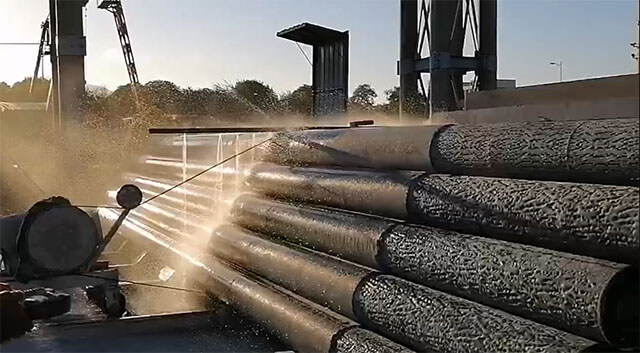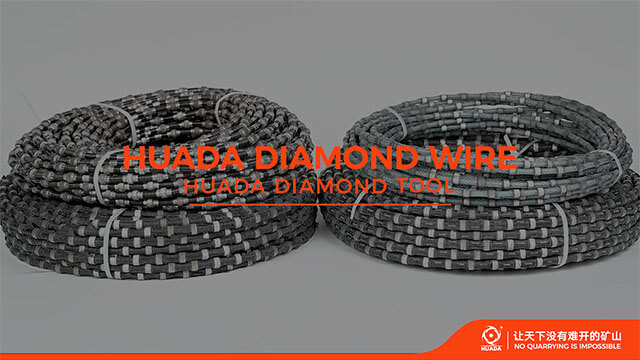Author:Huada Quarrying Machine FROM:Stone quarry machine manufacturer TIME:2024-11-13
Wire saw machines are essential tools in the marble industry, renowned for their efficiency and precision in cutting stone blocks. However, operating these machines involves various costs that can significantly impact overall profitability. Understanding these operational costs is crucial for businesses aiming to optimize their financial performance while maintaining high production standards. This article explores the key operational costs associated with wire saw machines for marble, providing insights into machinery expenses, maintenance, labor, and other relevant factors.

The first significant cost associated with wire saw machines is the initial investment. Purchasing a high-quality machine can require a substantial upfront expenditure, often ranging from tens of thousands to hundreds of thousands of dollars, depending on the specifications and capabilities of the machine. Companies must also consider additional costs such as transportation, installation, and any necessary renovations to the workspace to accommodate the new equipment. The choice between new and used machines can also affect this initial investment, with used machines typically being less expensive but potentially requiring more frequent repairs and maintenance.

Wire saw machines rely on specific consumable materials, particularly the diamond wire itself. The cost of these wires can vary significantly based on quality and supplier. High-performance diamond wires may offer longer life spans and better cutting efficiency, but they come at a premium price. Additionally, other consumables such as lubricants and cooling fluids are necessary to ensure optimal machine performance and prevent overheating during operation. Businesses must budget for regular replacements of these materials, which can accumulate over time.
Regular maintenance is vital for the longevity and efficiency of wire saw machines. Companies need to allocate funds for routine inspections, servicing, and potential repairs. The complexity of the machinery means that specialized technicians are often required for maintenance tasks, which can increase labor costs. Preventive maintenance schedules can help minimize unexpected breakdowns and extend the lifespan of the equipment. However, if machines are not properly maintained, the costs of repairs can escalate quickly, impacting production timelines and overall profitability.
Operating a wire saw machine requires skilled labor. The costs related to staffing include salaries, training, and benefits for workers who operate and maintain the machinery. Skilled operators are essential for maximizing the efficiency and safety of the cutting process, and their expertise comes at a cost. Additionally, the need for ongoing training to keep up with technological advancements and safety regulations can add to labor expenses. Companies must balance the need for experienced staff with budget constraints to ensure operational efficiency.
Wire saw machines consume a significant amount of energy during operation, which can lead to substantial utility bills. Factors such as machine size, operational speed, and usage frequency all contribute to energy expenditures. Companies may explore energy-efficient models or practices to mitigate these costs. Implementing measures like optimizing machine settings or using renewable energy sources can help reduce the overall energy footprint and lower operational expenses.
Transportation costs play a crucial role in the operational expenses associated with wire saw machines, especially for businesses that operate in multiple locations or need to source raw materials from different suppliers. The logistics of moving heavy machinery, transporting marble blocks, and delivering finished products can add up quickly. Efficient logistical planning and partnerships with reliable transport services can help manage these costs effectively.
Insurance is another critical component of operational costs. Companies must insure their machinery against damage and liability, which can be a significant expense. Furthermore, compliance with safety regulations and industry standards may necessitate investments in protective gear, safety training, and inspections. Failing to meet regulatory requirements can result in fines or increased insurance premiums, further impacting operational budgets.
Downtime due to machine failures, maintenance, or delays in supply chains can result in significant production losses. These interruptions not only affect potential revenue but can also lead to increased operational costs as businesses scramble to catch up on delayed orders. Implementing strategies to predict and mitigate downtime, such as keeping spare parts on hand or investing in backup machinery, can help minimize these risks and maintain steady production levels.

In conclusion, the operational costs associated with wire saw machines for marble encompass a broad range of factors, from initial investments to ongoing maintenance and labor expenses. Understanding these costs is essential for businesses in the marble industry to optimize their operations and maintain profitability. By carefully managing each aspect of operational expenses, companies can enhance their efficiency, reduce waste, and ultimately improve their bottom line. Strategic planning and investment in technology and skilled labor will pay dividends in the long run, ensuring that businesses remain competitive in a rapidly evolving market.